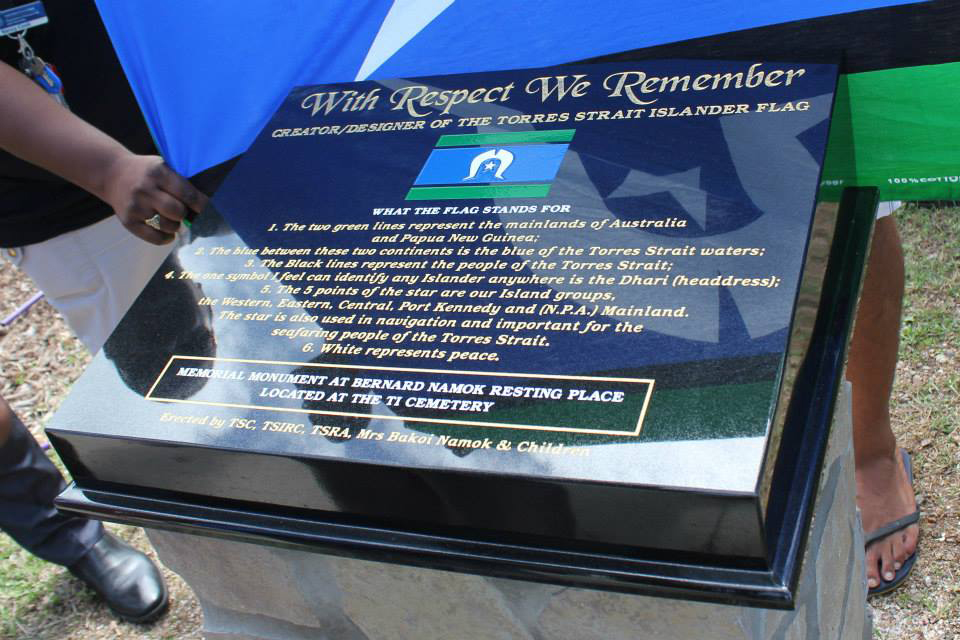.jpg)
The Torres Strait Islander flag was created as a symbol of unity and identity for Torres Strait Islander peoples. Torres Strait Islanders’ culture and traditions are strongly connected to the land, sea and sky - elements which are represented in the flag.
Torres Strait Islands and its people
The Torres Strait Islands are a group of over 200 small islands in the Torres Strait off the Australian mainland’s northern most point. There are seventeen inhabited islands and two communities located at the tip of Cape York that are classified as a part of the Torres Strait. The Torres Strait is the waterway that separates Australia and Papua New Guinea.
From the waters of the Strait, where the Coral and Arafura Seas meet in one of the most fragile and intricate waterways in the world, rise hundreds of islands, islets, cays, reefs and sandbanks. All these are traditionally named, owned and used. No two islands are identical, each being shaped by its unique landscape, stories and history.
The Torres Strait Islander peoples along with Aboriginal peoples are the Indigenous peoples of Australia, and are two very distinct cultural groups.
Torres Strait Islanders are a sea-faring people and engage in trade with the people of Papua New Guinea. As ocean explorers, the Torres Strait Islander peoples are renowned for their seafaring ability to navigate by the stars as in the story of the great warrior, Tagai.
Tagai was a ‘cult hero’ who became a huge star constellation that can be seen in the night sky. The Torres Strait Islander peoples used this constellation along with the changing seasons to know when to plant crops, when to harvest, and to stay on-course when at sea.
Story of the Torres Strait Islander flag
The Torres Strait Islander flag was designed by the late Bernard Namok from Thursday Island. It was the winning entry in a design competition, held as part of a Cultural Revival Workshop, organised by The Islands Coordinating Council in January 1992. The flag was officially presented to the people of the Torres Strait at the sixth Torres Strait Cultural Festival on 29 May 1992.
The flag was recognised by the former national body, the Aboriginal and Torres Strait Islander Commission in June 1992 and given equal prominence with the Aboriginal flag.
In July 1995, the Torres Strait Islander flag was recognised by the Australian Government as an official 'Flag of Australia' under the Flags Act 1953.
Symbolic meaning
The flag consists of horizontal bands: two green and one blue, separated by black lines; a Dhari which is a distinctive traditional dance and ceremonial headdress; and a five-pointed star are central motifs of the flag.
Each part of the flag gives meaning to the Torres Strait Island culture:
- Green: the two green lines represent the mainlands of Australia and Papua New Guinea.
- Blue: the blue between these two continents is the blue of the Torres Strait Island waters.
- Black: the black lines represent the people of the Torres Strait.
- Central symbol: is one that any islander anywhere can identify with, the Dhari or headdress.
- Five pointed star: The five-pointed star represents the five major Island groups of the Torres Strait as well as sea-faring navigation.
- White: represents peace.

Dhari is the Meriam (Mer) word for 'headdress' and is used in the eastern islands. In the central and western islands where Kala Lagaw Ya is spoken, the headdress is called Dhoeri. Customarily worn and made by males, Dhari designs vary from island to island.
The headdresses were traditionally made from Frigate Bird and Torres Strait Pigeon feathers but are now made from a wide and often creative range of materials including heavy cardboard, plywood, chicken feathers and cane.
When wearing Dharis at night for performances, the dancers shake their heads to vibrate the spokes, causing a brilliant shimmering effect, described as being like the glint of a pearl shell dropped in water.
The Island Coordinating Council also chose the design as its simplicity would allow each Torres Strait Island community to incorporate their own emblem into the design for local identification.
Copyright
The Torres Strait Island Regional Council holds copyright in the Torres Strait Islander Flag. Requests for permission to reproduce the Torres Strait Islander Flag should be addressed to them.
You can purchase the Torres Strait Islander Flag from Flagworld.
- Bernard Namok
- The Aboriginal flag
- The Mabo Case
- The Little Red Yellow Black Book
- Torres Strait Islanders by Anna Shnukal
- Torres Strait Island Regional Council - Torres Strait Islander Flag
- Indigenous Remote Communications Association - Honouring the late Bernard Namok
- Monument Australia - Bernard Namok Senior




